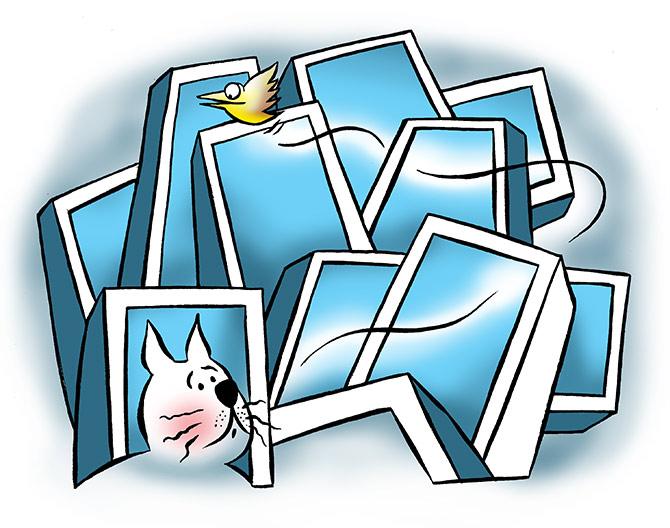But the kind of usage and the demographic driving that change will be entirely different from the first online users.
Illustration: Uttam Ghosh/Rediff.com

A research report conducted by social impact investment firm Omidyar Network India indicates that at least half a billion new users will log into the internet between 2017 and 2022.
But the kind of usage and the demographic driving that change will be entirely different from the first online users.
Omidyar Network India’s managing director Roopa Kudva says that the paper which supports her firm’s investment thesis found that the big changes will be threefold: New users will come from smaller towns and cities, will be largely women, and that their consumption patterns will be led by different drivers than the current majority of internet shoppers.
Omidyar has invested approximately $300 million in India over the past decade across 89 ventures that drive towards social impact and more recently include companies like bike rental start-up Bounce.
The typical online journey involves users learning about the internet through WhatsApp and YouTube before moving to news, free content, and information; then participating in communities; followed by money transfer platforms and recharges; education health and travel, and lastly ending at shopping.
Kudva adds that presently the population of ‘sticky, internet users is limited to between 40 and 50 million users across larger metros’.
“Their shopping habits are in line with e-commerce platforms, mostly in English, that are set up to sell structured, branded products that range from mobile phones and televisions to air conditioners.
"If e-commerce is to cater to the next half a billion internet users, it will have to be in relatable languages as well as through building confidence through communities,” she said.
‘Voice, video, and vernacular’ is what works for the other batch of potential internet users in this country, Kudva said, adding that the next wave of e-commerce will require both sellers and marketers to entirely reimagine the shopping experience.
Women in India self-censor themselves from using the internet, largely because they have been advised that they might encounter something they aren’t supposed to.
But the reality is that it also opens a pathway to communication with the outside world through WhatsApp and other chat platforms, which may not be encouraged in some regional communities.
What are the key differences that Omidyar’s partners see in the way the internet will be used in the future by millions of Indians?
For starters, it’s the unbranded products that are going to be popular according to the report, which indicated that transactions are projected to be smaller value and unstructured.
Also future new e-commerce adaptors are bound to be more inclined to find comfort by following brand influencers and social media leaders with huge following from smaller towns and cities, in addition to communities where they can exchange ideas and receive tips, first-hand user information, and endorsements from like-minded members.
“You see that with platforms like TikTok and Facebook.
"Have there been any unexpected signals from the next group of Internet users and shoppers?
"The speed with which that next user group is growing has taken us by surprise,” said Kudva.












 © 2025
© 2025